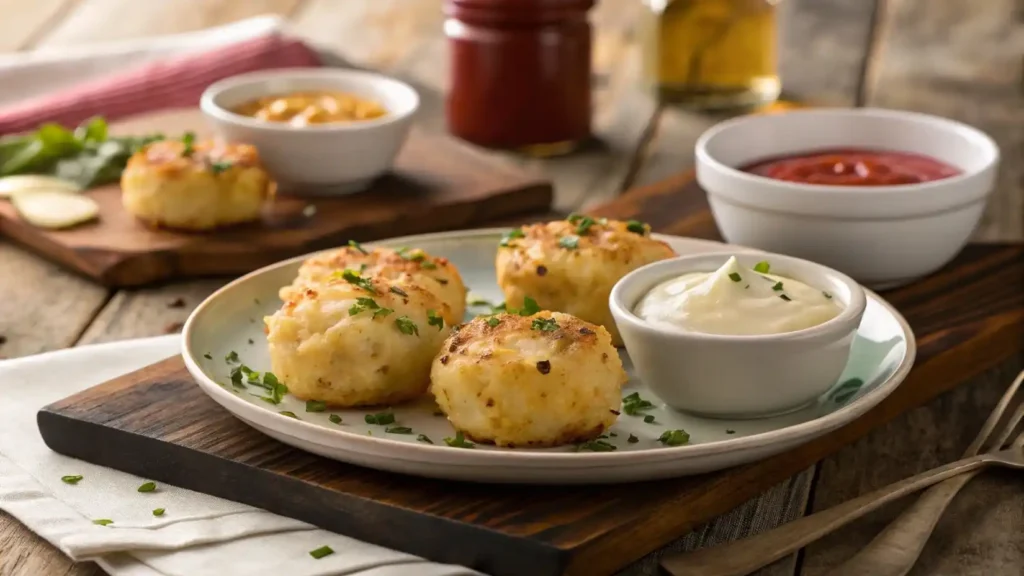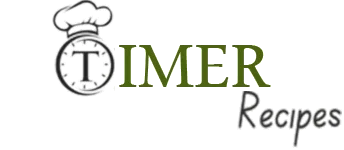What Are Cheesy Mashed Potato Puffs?
Origins and Popularity
Cheesy Mashed Potato Puffs are a delightful culinary innovation that transforms the classic comfort food of mashed potatoes into a crispy, bite-sized delicacy. Originating from home cooks looking to reinvent leftovers, these delectable morsels have gained popularity as both a crowd-pleasing appetizer and a creative side dish. Their rise to fame can be attributed to their perfect combination of crispy exterior and creamy, cheesy interior – a textural experience that appeals to food lovers of all ages.
What Makes Them Different from Regular Mashed Potatoes?
Unlike traditional mashed potatoes, these puffs undergo a magical transformation through baking or frying. The key differences include:
- Structural integrity: Shaped into individual portions that hold their form
- Textural contrast: A crisp golden-brown exterior coupled with a light, fluffy interior
- Enhanced flavor profile: Incorporated cheese and additional ingredients that elevate the basic potato
- Versatility: Can be served as an appetizer, side dish, or even a standalone snack
Ingredients and Variations
Basic Ingredients for Classic Cheesy Mashed Potato Puffs
The foundation of any great potato puff includes:
- Mashed potatoes (preferably day-old for better texture)
- Eggs (as a binding agent)
- Cheese (for flavor and meltiness)
- Butter or olive oil
- Salt and pepper
- Optional herbs like chives or parsley
Best Cheeses to Use for Maximum Flavor
Cheese selection can make or break your potato puffs:
- Sharp Cheddar: Provides a classic, tangy flavor
- Gruyère: Adds a nutty, complex taste
- Parmesan: Offers a salty, crisp element
- Gouda: Brings a smooth, rich dimension
- Monterey Jack: Delivers excellent melting properties
Dietary Variations
- Gluten-Free Option:
- Replace regular flour with almond flour or gluten-free breadcrumbs
- Ensure all ingredients are certified gluten-free
- Vegan Variation:
- Use mashed cauliflower or sweet potato as a base
- Replace eggs with flax eggs
- Choose plant-based cheese alternatives
- Use nutritional yeast for cheesy flavor
- Low-Carb Adaptation:
- Substitute potatoes with cauliflower
- Use low-fat cheese options
- Add extra herbs and spices for flavor complexity
Step-by-Step Recipe Guide

Preparing the Mashed Potatoes
- Start with cold potatoes (preferably from the previous day)
- Ensure potatoes are thoroughly mashed with no lumps
- Allow potatoes to come to room temperature before mixing
Mixing the Ingredients for the Perfect Texture
- Whisk eggs thoroughly before incorporating
- Fold cheese and herbs gently to maintain air pockets
- Use a light hand to prevent dense, heavy puffs
- Season generously with salt and pepper
Baking vs. Frying: Which Method is Better?
Baking
Pros:
- Healthier option
- Less hands-on monitoring
- More consistent results
- Easier clean-up
Method:
- Preheat oven to 425°F (218°C)
- Use a silicone muffin tin or well-greased muffin pan
- Fill each cup about 3/4 full
- Bake for 20-25 minutes until golden brown
Frying
Pros:
- Crispier exterior
- Faster cooking time
- More traditional “comfort food” feel
Method:
- Heat oil to 375°F (190°C)
- Use a deep-fry thermometer for accuracy
- Fry in small batches to maintain oil temperature
- Drain on paper towels to remove excess oil
Tips and Tricks for the Perfect Potato Puffs
How to Achieve the Crispiest Outside and Fluffiest Inside
- Use a cookie scoop for uniform size
- Pat the tops dry before baking/frying
- Sprinkle extra cheese on top for a crispy crust
- Let potato mixture rest for 10-15 minutes before cooking
Common Mistakes to Avoid
- Wet Potatoes: Ensure potatoes are well-drained
- Overmixing: Gentle folding prevents tough puffs
- Incorrect Temperature: Use a thermometer for precise cooking
- Overcrowding: Cook in batches for best results
Best Dipping Sauces and Toppings
Classic and Creative Dipping Sauces
- Classic Ranch
- Garlic Aioli
- Spicy Sriracha Mayo
- Herb-Infused Sour Cream
- Truffle Mayonnaise
- Smoky Chipotle Sauce
Toppings That Enhance the Flavor
- Crispy bacon bits
- Chopped chives
- Sour cream dollop
- Grated Parmesan
- Microgreens
- Cracked black pepper
Serving Ideas and Pairings

Best Occasions for Cheesy Mashed Potato Puffs
- Game day gatherings
- Holiday side dishes
- Potluck contributions
- Casual dinner parties
- Weekend brunch
What to Serve Alongside for a Complete Meal?
- Roasted chicken
- Grilled steak
- Vegetarian protein bowls
- Fresh salads
- Barbecue dishes
Leftover Ideas – Repurposing Your Puffs
Transforming Leftover Puffs into New Dishes
- Crumble over salads
- Use as a base for breakfast hash
- Stuff into omelets
- Create a potato puff casserole
Storage and Reheating Tips
Refrigeration:
- Store in airtight container
- Best consumed within 3-4 days
- Separate layers with parchment paper
Reheating:
- Oven: 350°F for 10 minutes
- Air fryer: 375°F for 3-5 minutes
- Avoid microwave to maintain crispiness
FAQs – Answering Common Questions
- Can I make Cheesy Mashed Potato Puffs ahead of time? Yes! Prepare the mixture up to 24 hours in advance and store in the refrigerator. Cook just before serving for best results.
- What’s the best way to store and reheat them? Refrigerate in an airtight container. Reheat in the oven or air fryer to maintain crispiness.
- Can I freeze these puffs for later use? Absolutely! Freeze uncooked puffs on a baking sheet, then transfer to a freezer bag. Cook directly from frozen, adding 5-7 minutes to cooking time.
- How can I make them extra crispy?
- Use panko breadcrumbs in the mixture
- Ensure potatoes are well-drained
- Cook at high temperature
- Don’t overcrowd during cooking

